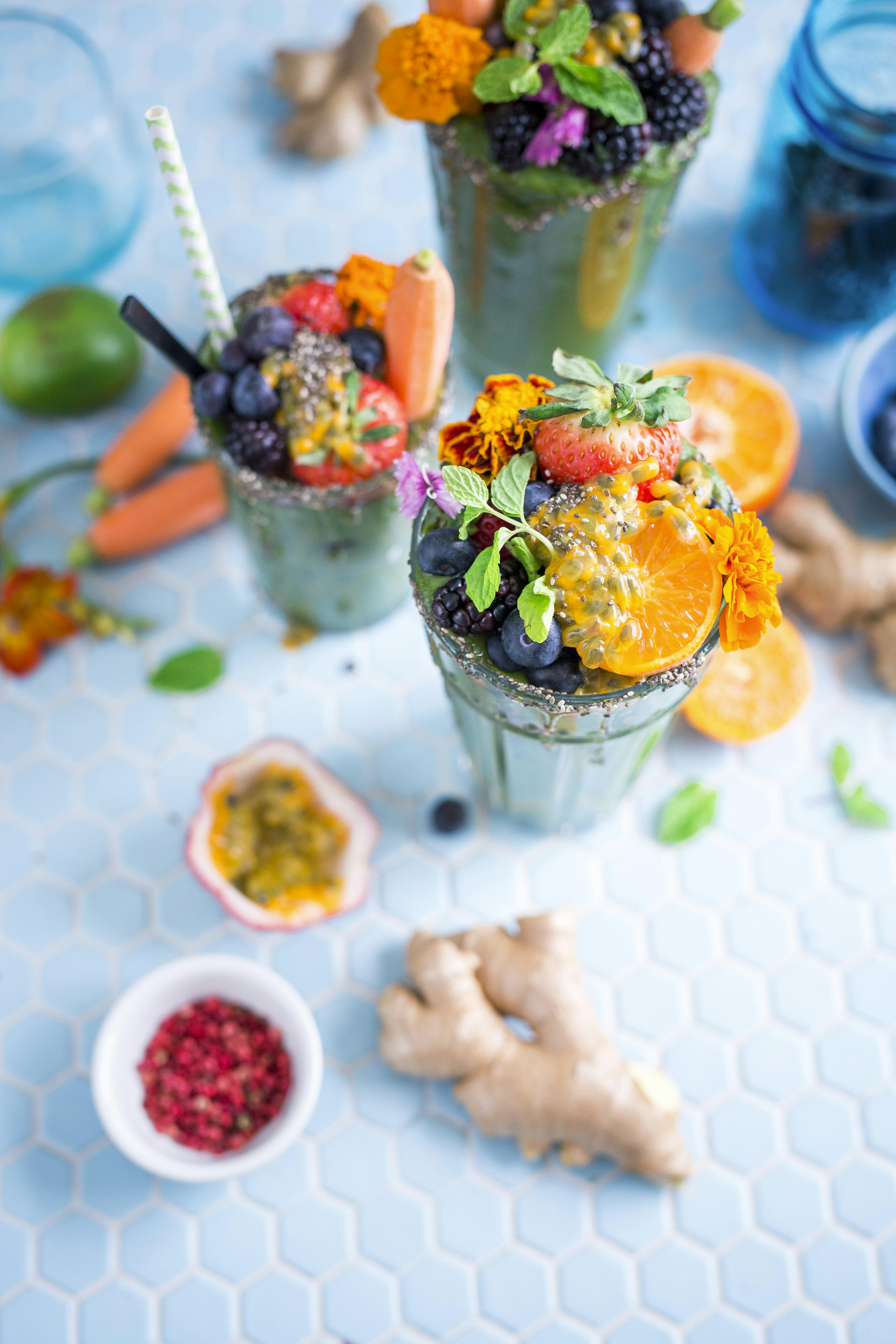In the vibrant world of wellness, where kale salads and quinoa bowls reign supreme, fruit smoothies have long enjoyed their status as the poster child of healthy indulgence. Their luscious hues and refreshing flavors make them an irresistible choice for those seeking a nourishing boost. Yet, beneath their wholesome exterior lies a question that has stirred both curiosity and concern: Are these beloved blends too high in sugar? As we delve into the swirling vortex of ingredients, nutrition labels, and dietary guidelines, this article aims to unravel the sweet truth about fruit smoothies, examining whether they truly deserve their reputation as a healthful staple or if they are, in fact, a sugar-laden trap. Join us on this flavorful journey as we sip, blend, and analyze our way to clarity.
Understanding the Sweetness of Fruit Smoothies
Fruit smoothies are often celebrated for their vibrant flavors and nutritional benefits, yet their sweetness can sometimes be a double-edged sword. The natural sugars found in fruits, such as fructose, are generally healthier than added sugars, but they can still contribute to a high sugar intake when consumed in large quantities. Understanding the composition of your smoothie can help in managing its sweetness without sacrificing taste. Consider using fruits that are lower in sugar, such as berries, and balancing them with more fibrous ingredients like spinach or kale.
- Use a variety of fruits: Mixing high-sugar fruits like bananas with lower-sugar options can create a balanced sweetness.
- Incorporate proteins: Adding yogurt or protein powder can help slow the absorption of sugars, keeping you fuller longer.
- Be mindful of liquid bases: Opt for unsweetened almond milk or coconut water instead of fruit juices to reduce sugar content.
By being conscious of the ingredients and their proportions, you can enjoy the delightful sweetness of fruit smoothies without overloading on sugar. Experimenting with different combinations not only keeps your taste buds excited but also ensures a more balanced nutritional profile.

Decoding Natural vs. Added Sugars in Your Blend
In the world of fruit smoothies, not all sugars are created equal. It’s essential to distinguish between the natural sugars found in fruits and the added sugars that often sneak their way into your favorite blends. Natural sugars are the ones that occur naturally in fruits, such as fructose and glucose, and they come bundled with essential nutrients, fiber, and antioxidants. These sugars are part of the fruit’s package deal, providing your body with energy while also supporting overall health.
On the flip side, added sugars are those that are incorporated into smoothies during preparation, often in the form of syrups, honey, or processed sweeteners. These sugars are the usual culprits behind the sugar spikes that health enthusiasts try to avoid. To keep your smoothie health-friendly, consider the following tips:
- Opt for whole fruits over fruit juices or concentrates.
- Limit sweeteners like honey or agave syrup.
- Balance with protein or healthy fats such as yogurt or nut butters.
- Check labels if using pre-made smoothie mixes or bases.
By understanding the sugar content in your smoothie, you can enjoy a delicious drink without compromising your health goals.
Balancing Flavor and Nutrition in Your Smoothie
Creating a smoothie that is both delicious and nutritious can feel like a balancing act. On one hand, fruits bring a natural sweetness and a burst of flavors that are hard to resist. On the other, they can add a significant amount of sugar to your diet. However, with a little creativity, you can craft a smoothie that satisfies your taste buds while keeping your nutritional goals in check.
Consider these tips to maintain a harmonious blend of flavor and nutrition in your smoothie:
- Mix in Veggies: Adding greens like spinach or kale can cut down the sugar content while boosting vitamins and minerals.
- Opt for Low-Sugar Fruits: Berries, kiwi, and avocado are excellent choices that offer sweetness with less sugar.
- Include Protein and Healthy Fats: Ingredients like Greek yogurt, almond butter, or chia seeds can enhance texture and keep you full longer.
- Limit Fruit Juice: Instead of juice, use water, coconut water, or unsweetened almond milk as a base.
By being mindful of your ingredients, you can enjoy a smoothie that’s not only a treat for your taste buds but also a boon for your body.

Smart Tips for a Healthier Smoothie Experience
Transform your fruity concoctions into nourishing powerhouses with these smart strategies. Opt for whole fruits instead of fruit juices to maximize fiber intake and keep sugar levels in check. Blending whole fruits allows you to benefit from the natural fibers that slow down sugar absorption, keeping your energy levels stable. Additionally, consider adding a handful of leafy greens like spinach or kale to your smoothie. These greens are low in calories but high in essential nutrients, making them a perfect addition to balance the sweetness.
- Protein Power: Incorporate protein sources such as Greek yogurt, almond butter, or a scoop of protein powder to make your smoothie more satiating.
- Fat Factor: Add healthy fats like avocado or chia seeds to provide a creamy texture and aid in nutrient absorption.
- Spice It Up: Enhance flavor without adding sugar by using spices like cinnamon or vanilla extract.
The Conclusion
In the vibrant tapestry of our dietary choices, fruit smoothies stand as a colorful thread, weaving together the promise of health with the allure of taste. As we sip on these blended concoctions, it’s essential to pause and reflect on their sweet symphony. Are they a harmonious blend of nature’s bounty or a sugar-laden serenade? The answer, as with many things, lies in balance and awareness. By understanding the components of our smoothies and making mindful adjustments, we can continue to enjoy these refreshing delights without tipping the scales toward excess. So, as you embark on your next smoothie adventure, let knowledge be your guide, ensuring that each sip is both nourishing and delightful. Here’s to blending wisely and savoring responsibly!




